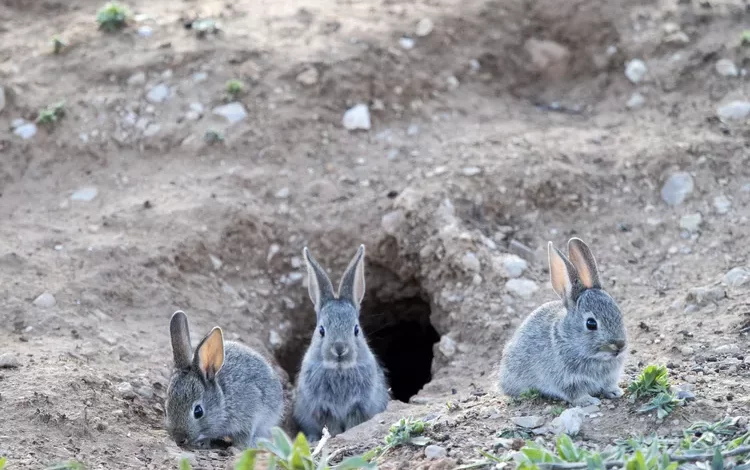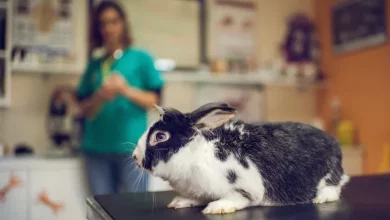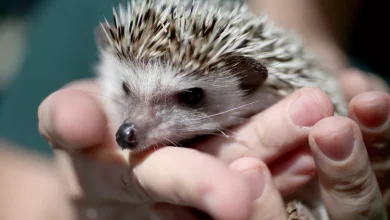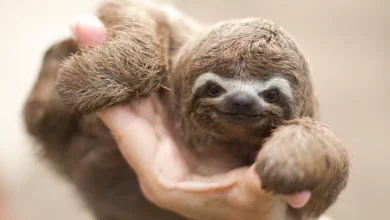Understanding Rabbit Behavior and Body Language

Analyzing Rabbit Posture and Facial Expressions
Analyzing Rabbit Posture and Facial Expressions is an important part of understanding the behavior of rabbits. This can help to identify potential health issues, as well as to better understand the rabbit’s mood and intentions.
Rabbits are typically alert and inquisitive animals, and their posture and facial expressions can provide insight into their emotional state. A relaxed rabbit will be standing upright, with ears perked up and eyes wide open. They may also be sniffing or exploring their environment. If a rabbit is feeling threatened or uncomfortable, they may crouch down and tuck their head into their chest, while their ears may flatten against their head.
Facial expressions are also important to note when analyzing a rabbit’s behavior. A happy rabbit will have relaxed facial features, with their eyes wide open and their mouth slightly open. They may also have a slight smile on their face. On the other hand, a scared rabbit may have their eyes closed or squinted, and their mouth closed tightly. They may also have furrowed brows or a tense jaw.
Finally, it is important to note any changes in a rabbit’s behavior over time. If a rabbit is displaying signs of stress or fear, it is important to take steps to address the issue. This could include providing a safe space for the rabbit, or providing more stimulation in their environment. If the behavior persists, it may be necessary to consult with a veterinarian for further evaluation.
Interpreting Rabbit Vocalizations
Interpreting rabbit vocalizations is an important part of understanding and caring for rabbits. Rabbits are highly social animals and use vocalizations to communicate with each other and with their human caretakers. By learning to interpret rabbit vocalizations, it is possible to better understand the needs and behaviors of these animals.
Rabbits produce a wide range of vocalizations, from gentle purring to loud, aggressive growling. Each type of vocalization conveys a different message and can provide insight into the rabbit’s emotional state. For example, a rabbit may purr when being petted or when content. A loud growl, on the other hand, may indicate that the rabbit is feeling threatened or scared.
Rabbits also make a variety of other noises, such as grunts, squeaks, and clicks. These noises can be used to communicate a variety of messages, from warnings to invitations to play. It is important to pay attention to the context in which these noises are made in order to accurately interpret them. For example, a grunt may indicate that the rabbit is annoyed if it is made during petting, but it may also be a sign of excitement if it is made while playing.
In addition to vocalizations, rabbits also communicate through body language. A rabbit may thump its hind legs when it is scared or excited, or it may flatten its ears when it is feeling threatened. By paying attention to both vocalizations and
Recognizing Rabbit Social Interactions
Rabbit social interactions are complex and can be difficult to recognize. Rabbits are social animals and, when kept in groups, they will form hierarchies and develop their own social behaviors. It is important to recognize these social interactions in order to provide a healthy environment for rabbits.
Rabbits communicate with each other through body language and vocalizations. They will use postures and facial expressions to indicate their mood and intentions. For example, a rabbit may flatten its ears and thump its hind legs when it is scared or angry. A rabbit may also purr or grunt when it is content.
Rabbits also interact with each other through grooming. Grooming is a way for rabbits to bond with each other and show affection. Rabbits will groom each other’s fur, lick each other’s faces, and nibble each other’s ears. Grooming is an important part of rabbit social interactions and should be encouraged.
Rabbits also interact with each other through play. Rabbits will chase each other, wrestle, and play with objects such as balls or toys. Play is a way for rabbits to express themselves and bond with each other. It is important to provide your rabbits with plenty of toys and activities to keep them entertained.
Rabbits also interact with each other through scent marking. Rabbits will rub their chin on objects or other rabbits to mark their territory. This behavior is normal and should not be
Understanding Rabbit Territoriality
Rabbits typically establish their territory by scent marking. They will rub their chin on objects to leave their scent behind, and they will also urinate and defecate in certain areas to mark their territory. This behavior is especially common in males, who will often mark their territory more frequently than females.
Rabbits may also use physical aggression to defend their territory. If a rabbit feels threatened by another rabbit, it may lunge at the intruder, bite, or thump its feet on the ground. This is a natural behavior that helps rabbits protect their territory from intruders.
In addition to scent marking and physical aggression, rabbits may also use vocalizations to communicate with other rabbits. Rabbits will make a variety of sounds, including honking, growling, and purring, to indicate their presence and establish dominance over other rabbits.
Understanding rabbit territoriality is important for providing a safe and comfortable environment for your pet rabbit. When introducing new rabbits into an existing group, it is important to do so slowly and carefully to avoid any potential conflicts. It is also important to provide enough space for each rabbit to have its own area, as this
Identifying Rabbit Stress Signals
Rabbits are social animals that can become stressed in certain situations. It is important for rabbit owners to be able to recognize the signs of stress in their pet in order to provide the best possible care. Identifying rabbit stress signals can help owners to better understand their pet’s behavior and take steps to reduce their stress levels.
One of the most common signs of stress in rabbits is a change in their normal behavior. Rabbits that are feeling stressed may become more aggressive or withdrawn, and may be less likely to interact with people or other animals. They may also become more vocal, making loud noises or grinding their teeth. Other signs of stress can include changes in appetite, excessive grooming, and changes in bathroom habits.
Another sign of stress in rabbits is physical changes. Rabbits that are feeling stressed may become tense and rigid, and their ears may be held back against their head. They may also develop a condition called “piloerection”, where the fur along their back stands up. This is a sign of fear or anxiety, and can be a sign that the rabbit is feeling threatened or overwhelmed.
Finally, rabbits that are feeling stressed may display signs of illness, such as diarrhea or loss of appetite. These symptoms can be caused by a variety of factors, but if they persist it is important to take the rabbit to a veterinarian for a checkup. Stress can make rabbits more susceptible to illness, so it is important to address
Excerpt
Rabbit behavior and body language can provide important clues to their emotional state. Rabbits communicate through a variety of behaviors, such as thumping, circling, and grunting. Understanding these behaviors can help owners better recognize and respond to their rabbit’s needs. By observing and interpreting their rabbit’s body language, owners can gain insight into their pet’s emotional state and provide them with the care they need.




